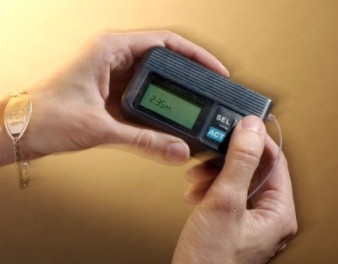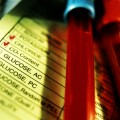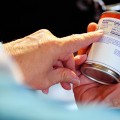Insulin Pumps: Helpful for the Youngest Children
Helping Children with Type 1 Diabetes
Part of living with type 1 diabetes means having to get your insulin from an outside source. This is true for children of all ages. The only way to make up for the insulin that a child can’t produce naturally is by using an insulin pump or through regular injections of insulin. Because of the advantages of using a pump, more and more adults and school-age children have been turning to pump therapy. However, physicians have been reluctant to prescribe it for infants and toddlers. These providers feel that families should learn basic skills of daily diabetes management—shots, testing and record keeping—before mastering the pump. insulin pump
Pump Therapy Versus Injections
All that is beginning to change. New medical evidence has shown that pump therapy has clear advantages over injections for even the youngest children. So, physicians are starting preschoolers on the pump soon after the child’s diagnosis. In a recent report in the medical journal, Pediatrics, researchers at Yale University Medical School found that insulin pump therapy is not only a safe and effective way to manage blood glucose in preschool children, but “may be superior to daily injections in minimizing the risk of severe hypoglycemia in this population.” That means dangerously low blood glucose and the wide swings of low and high blood sugar, can be reduced for young children.
What Is An Insulin Pump?
A pump is a pager-sized device that can be worn on a belt, is connected to a tube that is inserted into the skin around a child’s abdomen or waist. The pump imitates a normal pancreas by delivering a precisely measured, continuous stream of insulin throughout the day. It also delivers smaller doses of insulin as needed.
For small children in particular, being able to adjust the flow of insulin easily improves the flexibility of treatment, says lead author of the Yale study, JDRF researcher and advisor William Tamborlane, M.D. “A 12-year-old child can tell you when her blood sugar is low, but a 2-year-old child can’t,” said Dr. Tamborlane. “What’s more, a 12-year-old is more predictable in terms of eating, whereas with a 2-year-old, it’s harder.” Adds JDRF volunteer Kathy Spain, a diabetes educator and certified pump trainer: “With pump therapy, you give insulin in response to food, not the other way around, as with shots.” That means, just like a normal pancreas, the pump senses when more insulin is needed and then delivers it. When people take shots of insulin they have to think about what they are about to eat and then give themselves shots before they start eating.
Reducing Stress for Mothers
Using a pump also reduces stress for mothers, who usually bear most of the responsibility of managing their children’s diabetes. “It really empowers the parent,” says Dr. Tamborlane. Barbara Anderson, Ph.D., who recently led a study at Baylor College of Medicine in Houston, anticipated that pumps would increase anxiety for parents. She found the opposite to be true. “The first thing parents say is they can tell their child feels better,” Dr. Anderson said. “We think it’s because the kids on a pump don’t have such wide swings in blood glucose.”
New To Helping A Child Manage Type 1 Diabetes?
Pump therapy requires time and training. A common misunderstanding among patients and parents considering a pump is that they can forget all about testing blood sugar levels. But even with advanced technological features, pumps are still basically insulin delivery systems. They require blood sugar level testing to be done regularly to see if the right amount of insulin is being pumped. And dosages must be adjusted to cover food intake. “Remember that insulin pumps are not magical,” said Harvard University’s David Nathan, M.D.
For more information, visit www.jdrf.org or call (800) 533-CURE (2873).













